A CASE FOR ASPARAGUS
The Evidence
I’d like to make a case for growing asparagus, even if you’re not a vegetable gardener. In fact, vegetable gardeners need not relegate asparagus to the vegetable patch. The plants hold little interest to deer, rabbits and other furry invaders that must be fenced out of vegetable gardens.
The ferny stems can provide a wispy lime-green backdrop to mounded flowers like lavatera and gaillardia, or an airy foreground to the broad, glossy leaves of holly bushes. My present asparagus provides a backdrop for three clematis plants trained skyward on wire trellises.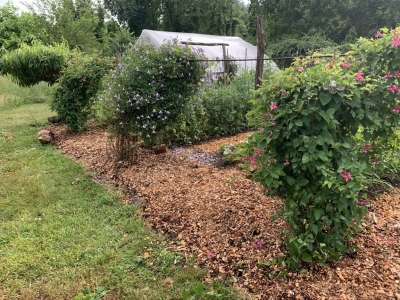
Asparagus is especially easy to grow, in part because it is a perennial. My patch is about 25 years old.
You can plant at any time in spring or summer, and with relatively little care, the asparagus you plant this spring could yield tasty spears for another 50 years. Thorough weeding beforehand can help get the new bed off to the right start.
But neither low maintenance nor beauty is the best reason to grow asparagus. Harvesting begins early, typically by the middle or the end of April here in Zone 5. The flavor of fresh picked asparagus is far, far superior than asparagus that’s even one day old. If you don’t believe me, beg or buy some asparagus spears that have just been picked and try them raw or just lightly steamed.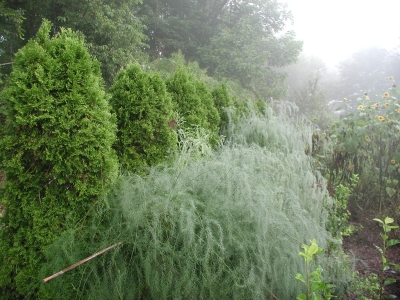
Ready. Set. Go
Once you’ve been persuaded to grow your own asparagus, you’ve got a choice of planting seeds or roots (sometimes called crowns). Figure on 10 to 20 plants for each asparagus lover in your household and plant them 12 inches apart.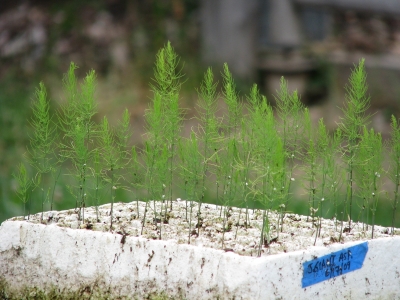
Whether you start with seeds or roots, I recommend planting one of the all-male varieties, such as Jersey Giant or Jersey Prince, which make growing asparagus even easier than in the past. Older varieties of asparagus, including Martha Washington, consist of male and female plants. The problem with such varieties is that the females set seeds, the production of which leads to two problems. First, making seeds takes energy, so female plants yield fewer spears than male plants. Second, those seeds produce seedlings, so asparagus can become its own worst weed as a patch eventually becomes overcrowded with asparagus plants.
Seeds cost less than roots and assure you of the freshest plants to set in the ground. They’re are also relatively easy to grow, as long as you have a little patience. Soak them in water for 24 hours, then sow them in seed flats for eventual transplanting. Or plant seeds directly in the garden. In a few weeks, the first wispy stems will appear. The first spears take two or three years before the plants can tolerate harvest.
Planting asparagus roots is a lot easier now than it was in the past, when gardeners were told to excavate a deep trench, set roots in the bottom, and gradually fill in around the spears as they grew. That recommendation was needed to keep the crowns down, out of reach of the whirling tines of tillers or other implements for stirring the soil surface for weed control.
I never till my ground, so I plant asparagus in holes just deep enough for the buds — the beginnings of young spears — to set below ground level. Weeds are kept in check with mulches.
Make sure to plant with the buds, which look like miniature white asparagus spears, pointing upward. Be patient; even two-year-old roots, which are sometimes offered for sale, need a year to get established.
The early growth of spears is fueled by energy stored in the roots during the previous summer. One reason to delay harvesting young plants is to allow roots the time to build up sufficient energy reserves. You will know those reserves are sufficient when you see spears as thick as your finger.
Even when a plant is old enough to be harvested yearly, each growing season it needs time to build up sufficient stores of energy by winter. To allow this to happen, simply stop harvesting after two and half months — or sooner, if there are lots of spindly, new spears.
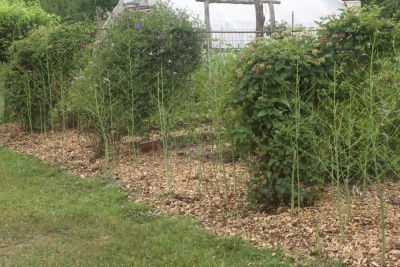
End of asparagus harvest and clematis bloom season
Three “Jobs”
You’re unlikely to encounter insect or disease problems in a backyard planting of asparagus, with one exception, asparagus beetle, which lays little black eggs on the growing spears. Some gardeners resort to insecticide sprays for this pest, but I’ve always managed to keep the pest in check by picking all spears, even if they are damaged or I’m no longer interested in eating them, throughout the harvest season. This starves the beetles of food. A blast of water, which dislodges the eggs, is another way to keep the asparagus beetle in check.
My old asparagus patch requires only three things of me. At the end of the season, in fall, I cut down and compost all stems after they have turned brown and died. 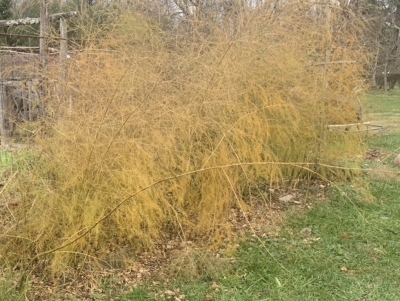 Sometime before the new spears emerge in spring, I spread a layer of weed-free mulch, such as autumn leaves or arborist wood chips, over the ground. (Poor soils will need fertilizer also, depending on what’s naturally lacking, or what nutrients have been added in the mulch.)
Sometime before the new spears emerge in spring, I spread a layer of weed-free mulch, such as autumn leaves or arborist wood chips, over the ground. (Poor soils will need fertilizer also, depending on what’s naturally lacking, or what nutrients have been added in the mulch.)
Once asparagus season begins, I harvest regularly, daily in hot, sunny weather, bending over any spear that is six to eight inches tall until it snaps. That will leave the tough base in the ground and a spear tender and tasty from one end to the other in my hand.

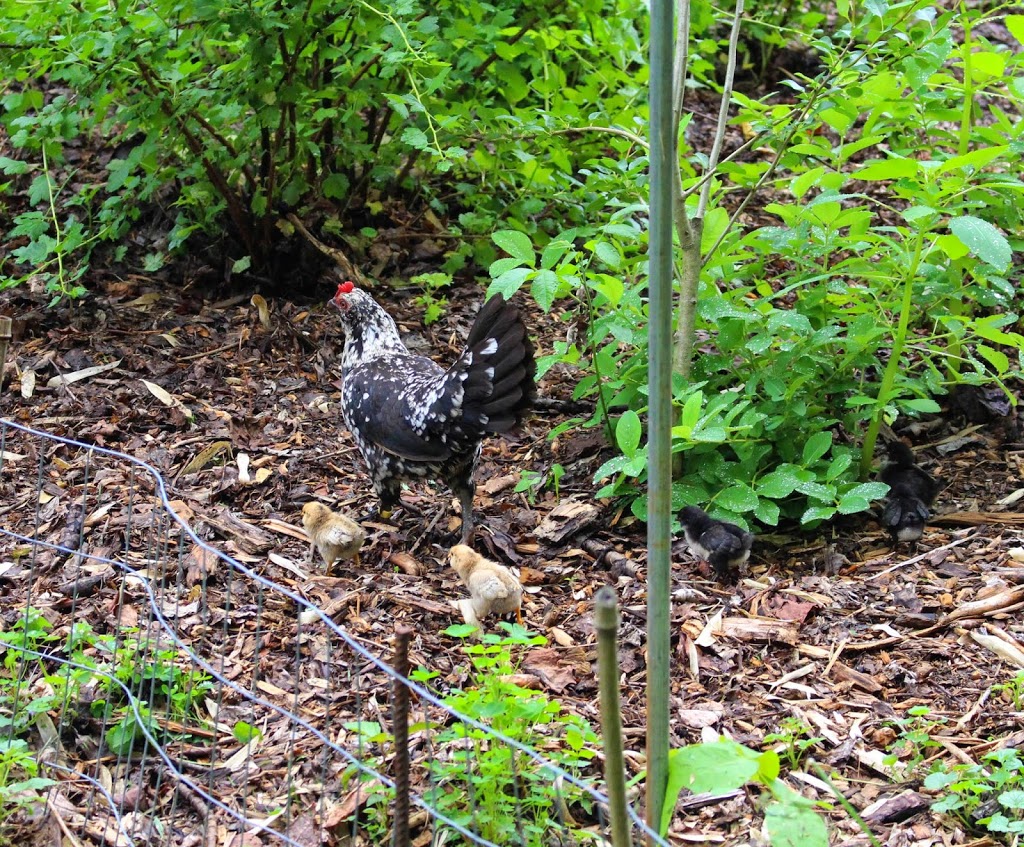

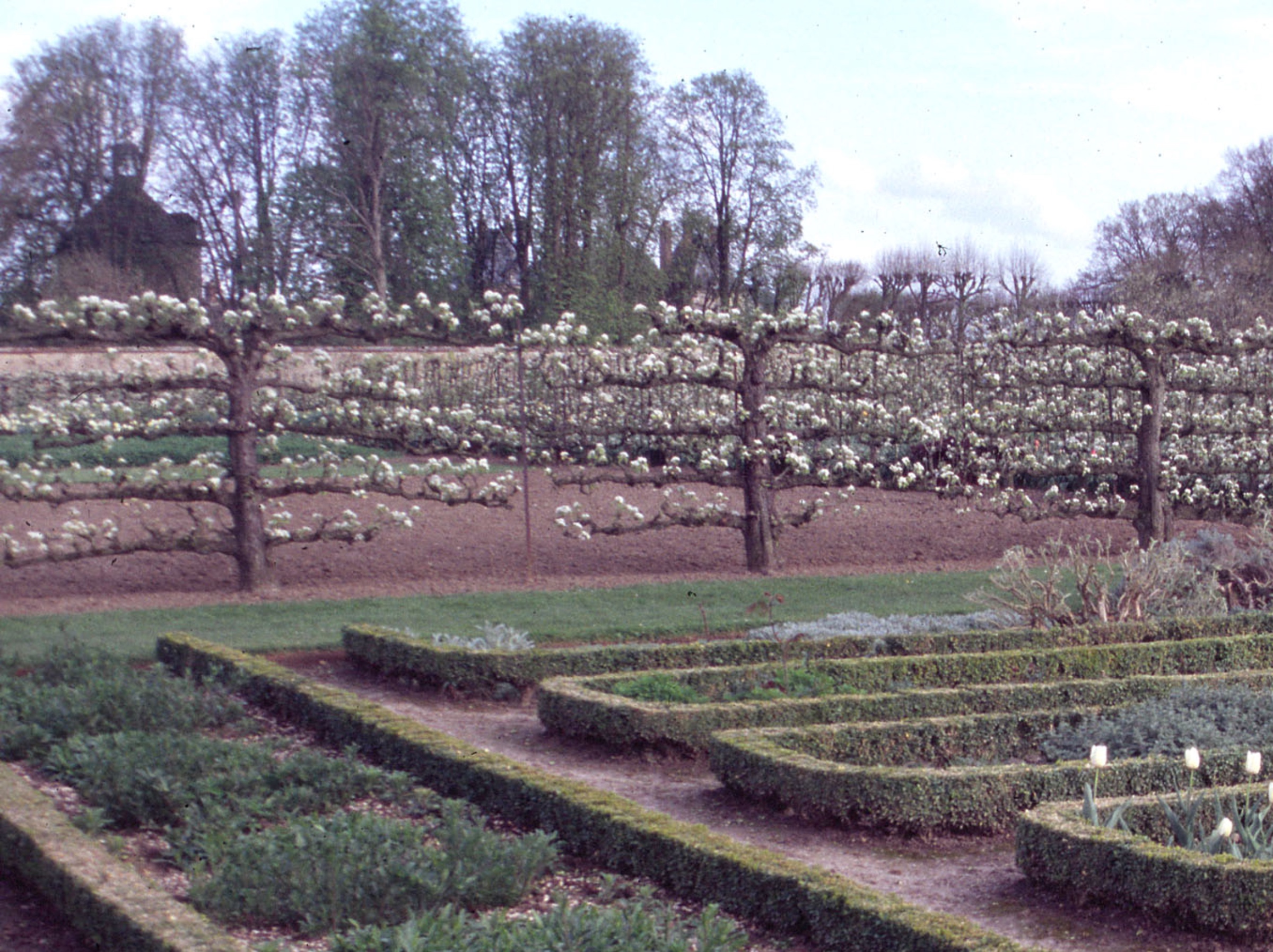
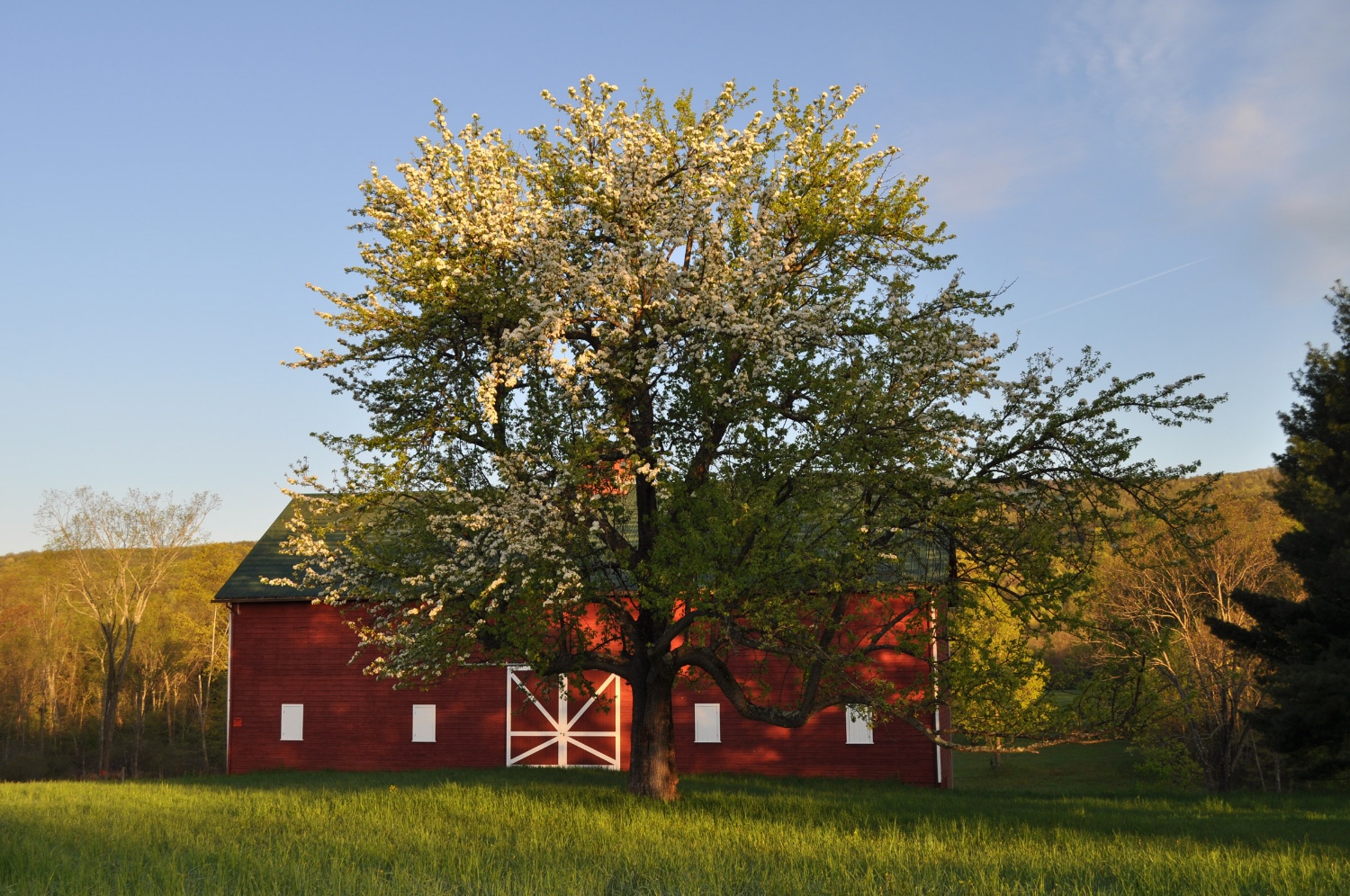
Sadly my asparagus only seem to produce one crop and then pretty much give up the ghost! There are only 3 plants so clearly I need to up my game…I see many more plants in my future. Since serves don’t like them, would it make sense to plant a bunch at the various springs on our property? They are all well away from the house…..
“serves”? Please read your comment and correct that word.
Should have read “since the various furry critters don’t like them….”
So basically I’m wondering if it might work to plant them at one of our springs—away from my “official” garden if deer, bunnies etc aren’t all that interested in them? My biggest concern is the moose on our property which are fairly destructive…..
Moose might step on them but probably not eat them. Why near a spring? Asparagus just needs average good soil.
Our soil tends to be either decomposed granite in a mica substrate, or gluey clay. The springs have lovely fertile soil—pretty much the only good soil on our 40 acres!
Thank you for sharing your gardening knowledge owledge. Your always make the task at hand approachable for the average gardener. So many others outline steps that are difficult, recommend materials not readily accessible, and overlook common sense options.
I had let my asparagus patch devolve and disappear and had decided not to resurrect because of the deep digging, etc. Your message has given me the info I need to start a new bed. I love the idea of adding it to another area of my yard rather than the veg patch.
Asparagus beetles have decimated my asparagus stand, if i cut down all my asparagus ( which isnt much anymore) will they go away? How log would i have to do that?
As I wrote in my post, during the 4 or 5 weeks when you pick for eating, each time get rid of all stalks, even spindly ones that you won’t be eating. That period of abstinence will sufficiently decimate the population.
Hi! I am finally thinking to plant asparagus, and heard about sharing the bed with strawberries. is there some valid wisdom in this? 🙂
It’s got potential, with Junebearing strawberries only, though. These varieties tolerate low light after they finish their June crop. The main downside may be that the bed would be come a mess in time as the strawberries start to “run” all over the place.
We love, and look forward our asparagus. It’s the easiest vegetable we have that keeps on giving year after year. One patch is over 24 years old inherited with the property. Last year I found many seedlings in our vegetable beds, apparently from the compost, or the birds spreading the seeds. I couldn’t resist starting two new rows of asparagus from these volunteer seedlings. The only pest we have is the Japanese beetle who love the ferns. I manage to keep them at bay with a few minutes of collecting them when managing the garden.
Hello Lee!
Quick question to ask some clarification on your posts recommendation to pick all spears, even the spindly ones I’m not eating to help reduce beetle populations: I have had my asparagus bed ravaged by voles. I believe the dang things even carried seeds or roots all over the place as I have many new asparagus plants popping up everywhere including my main veg garden 20 feet away! Some of the plants seemed to display some extensive root damage as they are only sending up spindly spears. I have not bene harvesting these as I was leaving them to regenerate the young (and chopped up) crowns. Should I cut all these out? This is the first year we are truly able to harvest from the patch, but am worried about the plants sending up only thin spears as I look at them as very young plants. If you wouldn’t mind writing back, I sure would appreciate it. Thank you so much!
I would start by dealing with the voles. They generally avoid mowed lawn because of predators. Plus you could put out traps. An outdoor cat would help.